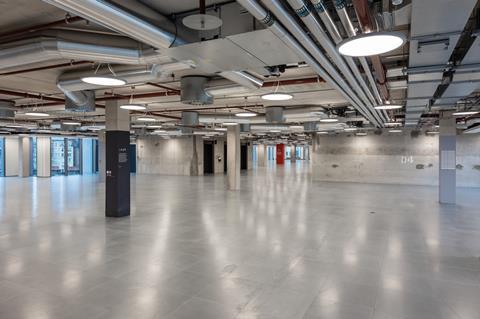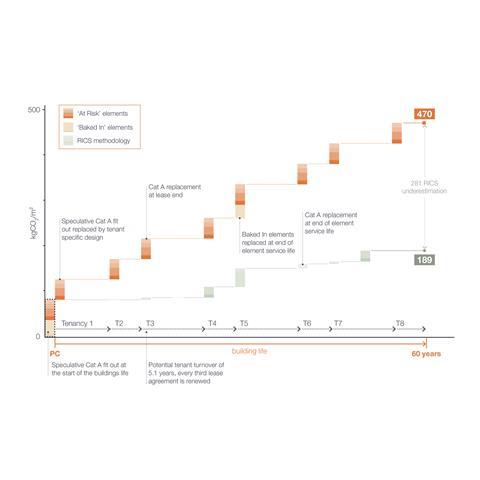The study, carried out by AHMM, challenges the assumptions made in the RICS Whole Life Carbon Assessment which has become the industry standard for calculating carbon emissions
A new study by AHMM reveals that the carbon impact of Cat A fitout is much higher than previously thought.

The research, called Fit Out Rip Out, found the whole life carbon impacts of Cat A fitout for a lease of under 10,000sqft over 60 years was up to two and a half times greater than if calculated using the industry standard methodology, the RICS Whole Life Carbon Assessment. The research was compiled with input from British Land, Derwent and The Office Group.
Cat A fitouts are where developers fit out speculative offices with HVAC systems, lighting, carpets and blinds to make these appeal to prospective tenants.
Cat A is particularly wasteful as new occupiers generally rip this out and replace it with a fitout that meets their specific needs. The cycle can be repeated many times over the lifetime of the building as tenants who are moving out are obliged to reinstate the original fitout as part of dilapidations clauses. This is then ripped out by the next tenant.
Calculating the true carbon impacts of Cat A fitout is challenging as the RICS methodology includes two categories, finishes and services that span across the base build, such as services distribution in the core, and office fitout which includes items such as on floor ductwork and fan coil units.
Working out how to allocate the carbon impacts of the base build versus the office fitout is up to the discretion of individual assessors.

The study looked at four different types of fitout ranging from substantial to subtle. The substantial fitout featured high level air distribution with heating and cooling provided by fancoil units with sprinklers and other services hidden by a suspended ceiling incorporating lighting. The subtle fitout features natural ventilation with heating and cooling provided by pipes buried in the concrete floor slabs. The former is potentially the most carbon intensive as most of the services are at risk of being ripped out during a new fitout whereas much of the services in the subtle fitout are baked into the building fabric.
The research found that substantial fitouts in a lease of under 10,000sqft could add up to 470kgCO2m2 over 60 years whereas subtle fitouts totalled 231kgCO2m2 for the same lease. The carbon impacts of fitout on larger areas was lower because tenants taking big spaces tend to stay longer in one location.
>>See also: What the Future Homes Standard means for net zero
Dr Craig Robertson, head of sustainability at AHMM said: “This report outlines the drivers of this process and, for the first time, quantifies the potential impacts in both upfront and life cycle carbon terms.
“The data from our study illustrates the scale of the problem, and by sharing these findings beyond AHMM we hope to provoke conversations across our industry that lead to meaningful change in the way that we develop, market, and occupy our office buildings that responds to the climate emergency.”



























No comments yet